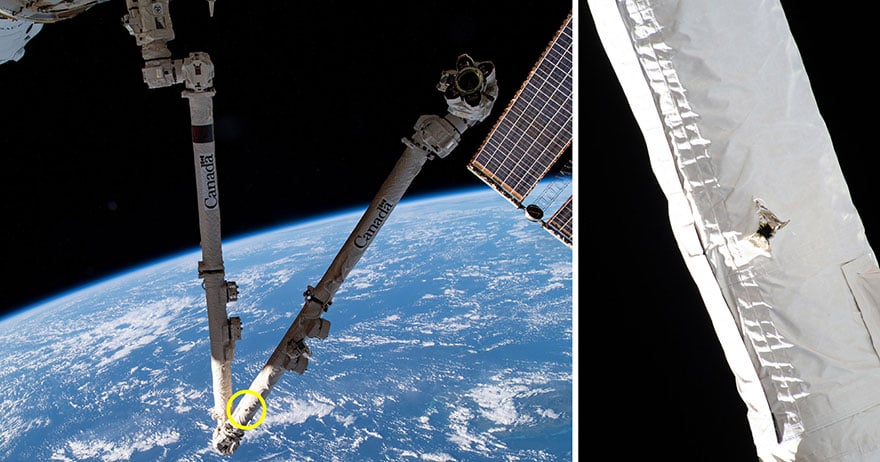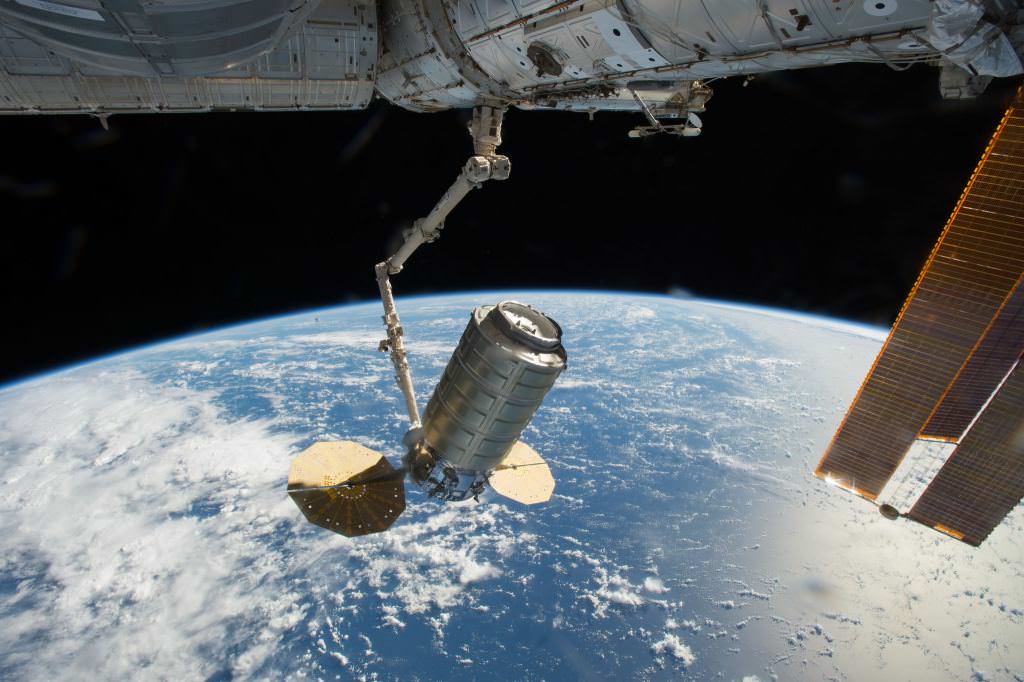The International Space Station's robotic arm, Canadarm2, was struck by a piece of space debris. But luckily, it appears to be only a flesh wound, and the arm has been cleared for nominal operations while analysis on the strike continues.
NASA and Canadian Space Agency officials don't know exactly when the arm was hit – or what hit it -- but the damage was noticed on May 12 during a routine inspection. The hole is quite small, approximately 5 mm (.2 inches) in diameter.
Since the arm is still operational, the damage appears to be limited to a small section of the arm boom and thermal blanket.
Loading tweet...
— View on Twitter
Canadarm2, one of the CSA's major contributions to the ISS, has been a stalwart on the station since it arrived onboard in 2001. The arm is 17.6 meters (57.7 feet) long and has a diameter of 35 cm (14 inches). Canadarm2 was instrumental in constructing the ISS, as well as berthing visiting spacecraft.
The CSA said in a blog post that while the utmost precautions are taken to reduce the potential for collisions with the ISS, impacts with tiny objects do occur. The culprit could have been a piece of natural space dust or rock, or orbital debris from a satellite or fragmentation debris from a spent rocket. Orbital debris is tracked by the worldwide Space Surveillance Network, which uses electro-optical, passive radio frequency (rf) and radar sensors.
A 2021 report by the US Office of the Inspector General on NASA's efforts to mitigate the effects of orbital debris, noted that millions of pieces of orbital debris exist in low Earth orbit (LEO), with at least 26,000 the size of a softball or larger that could "destroy a satellite on impact; over 500,000 the size of a marble big enough to cause damage to spacecraft or satellites; and over 100 million the size of a grain of salt that could puncture a spacesuit."
Moreover, the report says, the growing volume of orbital debris threatens the loss of important space-based applications used in daily life, such as weather forecasting, telecommunications, and global positioning systems that are dependent on a stable space environment.
If nothing else, the recent hit on the Canadarm2 – which came from an object that was definitely not tracked -- shows the potential dangers astronauts face during spacewalks. Imagine an object traveling at 27,350 km/h (17,000 mph) hitting someone in a spacesuit.
 Universe Today
Universe Today

